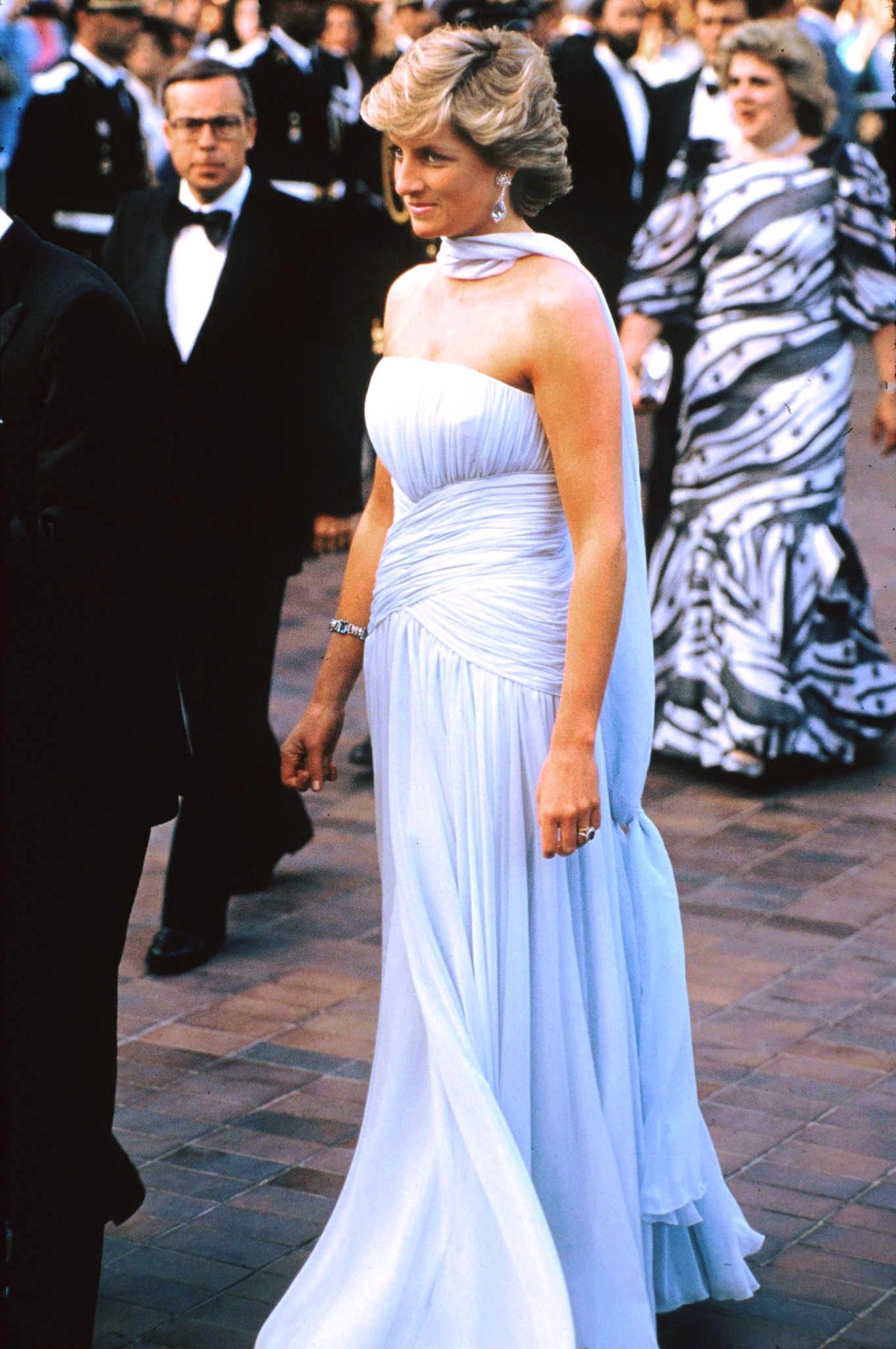When Princess Diana arrived at the 1987 Cannes Film Festival, she looked like a vision, gliding effortlessly down the red carpet in a powder-blue chiffon gown that caught the Mediterranean breeze as if it were part of the sea itself. The cameras didn’t miss a moment, snapping photos of her elegance, poise, and timeless beauty.

To the world, it was another dazzling appearance by the People’s Princess. But behind the sparkle of the flashes and the flowing silk was a silent tribute, a deeply personal message stitched into every inch of that dress—a quiet goodbye to someone who had once seen and comforted her in a way no one else had. Known for using fashion to communicate, Diana was never one to make a style choice without intent. She gravitated toward soft pastels and graceful silhouettes that softened the sometimes cold and distant image of royalty, offering warmth and accessibility to the public. But this night was different.
While the official purpose of her ten-hour trip to Cannes with Prince Charles was to honor British cinema and Sir Alec Guinness, the moment became something far more meaningful because of what she chose to wear. The gown was designed by Catherine Walker, a longtime collaborator and one of Diana’s most trusted designers. Walker understood Diana’s desire to let her clothes speak when words couldn’t. The strapless, pale blue chiffon gown was not only stunning but symbolic—a tribute to Grace Kelly, the American film star who became Princess Grace of Monaco and whose life, like Diana’s, ended in a tragic car accident. The two women had crossed paths in 1981, just after Diana’s engagement to Prince Charles had been announced.
They met at a charity event, and the young, overwhelmed Diana found herself in tears, hiding in a bathroom. Grace followed her in, comforted her, and gave her some honest, heartfelt advice about the pressures of royal life. That brief yet powerful moment left a lasting mark on Diana’s heart. Years later, as she walked the red carpet in Cannes, Diana’s dress bore an intentional resemblance to a gown Grace Kelly wore in Alfred Hitchcock’s To Catch a Thief, which had been filmed not far from where Diana now stood.
It was Diana’s way of honoring Grace—not through grand gestures or public statements, but through a whisper of fabric, a nod in the language of fashion. Most media outlets that night were captivated by Diana’s radiance, focusing on her glamorous appearance rather than the deeper meaning sewn into her gown. But Diana’s tribute wasn’t meant to be shouted. It was for those who had been paying attention, for those who remembered the bond the two women shared and the struggles they both faced behind closed palace doors. The color, the movement, the elegance of the gown—all served as an unspoken connection between two princesses who had once stood in similar shoes, carrying the same emotional weight beneath layers of satin and protocol. Diana wore the gown again in 1989 for the premiere of Miss Saigon, and later, in 1997, just months before her own untimely death, she chose to include it in the Christie’s auction where she sold 79 of her dresses to raise money for charitable causes. The Cannes gown sold for over $70,000 and was later resold for $132,000, with proceeds going toward children’s charities—causes that had always been close to Diana’s heart. In 2017, the gown was displayed at Kensington Palace, once again connecting the public to the emotional legacy Diana had left behind. What that gown represents today is far more than a moment of fashion brilliance. It reflects Diana’s ability to communicate love, loss, compassion, and remembrance without saying a single word. Her clothing choices often defied the rigid expectations of royal life, allowing her to express emotions that protocol would never allow her to speak aloud. That night in Cannes, her dress shimmered in the spotlight, but its true purpose was a quiet tribute to Grace Kelly—a woman who had once offered her comfort and understanding. It was a farewell wrapped in silk, a message of solidarity between two women who lived under relentless public scrutiny yet found a way to connect through grace, kindness, and the shared burden of their roles.





